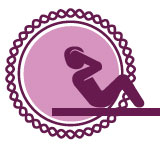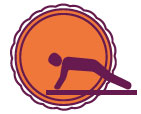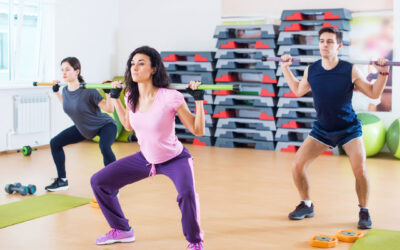 If you’re trying to improve your overall fitness, you might be tempted to spend most of your exercise time doing some type of cardio, such as walking or swimming. Aerobic exercise is an important part of staying healthy, but you might want to take a more balanced approach to fitness, one that includes strength-training exercises and stretching.
If you’re trying to improve your overall fitness, you might be tempted to spend most of your exercise time doing some type of cardio, such as walking or swimming. Aerobic exercise is an important part of staying healthy, but you might want to take a more balanced approach to fitness, one that includes strength-training exercises and stretching.
 Stretching doesn’t count toward meeting the aerobic or muscle-strengthening guidelines, but it’s relaxing, doesn’t require any fancy equipment and can be done anywhere – even waiting in line at the grocery store. Plus, done right, stretching may provide real benefits. So don’t throw in the towel at the gym before reaching for your toes. The benefits of just 5 to 10 minutes of stretching before and after your workout are too good to be ignored.
Stretching doesn’t count toward meeting the aerobic or muscle-strengthening guidelines, but it’s relaxing, doesn’t require any fancy equipment and can be done anywhere – even waiting in line at the grocery store. Plus, done right, stretching may provide real benefits. So don’t throw in the towel at the gym before reaching for your toes. The benefits of just 5 to 10 minutes of stretching before and after your workout are too good to be ignored.
Why it’s important to stretch
Stretching can help increase your overall flexibility, but it may also help improve your posture, manage pain caused by tight muscles and help you stay balanced. Since muscles come in pairs that ideally counterbalance each other, stretching and strengthening the muscles opposite the ones that always seem tight might help.
If you have a sore back, for example, overdeveloped chest muscles or underused back muscles may be to blame. Try stretching the muscles in your chest with arm rolls, or clasp your arms behind your back and gently pull your shoulders down and back.
 Stretching tight muscles can also help counteract the negative effects of sitting for long periods of time. Hunching over a desk can create muscle tightness that can lead to poor posture and pain, notes Joshua Duvauchelle, an ACE-certified personal trainer in Vancouver, Canada.
Stretching tight muscles can also help counteract the negative effects of sitting for long periods of time. Hunching over a desk can create muscle tightness that can lead to poor posture and pain, notes Joshua Duvauchelle, an ACE-certified personal trainer in Vancouver, Canada.
“Stretching helps correct habitual posture problems, which can translate to reduced lower back pain,” he says.
One of the best reasons to stretch is to help prevent injuries.
“Stretching increases a joint’s range of motion,” says Diana Dove, an AFAA-certified personal trainer in New York City. “Without sufficient range of motion, the body is vulnerable to injury: the likelihood of pulling a muscle due to overexertion increases, as does the potential to lose balance and/or take a fall.”
How to stretch
New research suggests that stretching is most beneficial when you incorporate both static and dynamic stretching into your routine. Static stretching – reaching and holding a position for a set amount of time – can help lengthen and counterbalance tight muscles, but your routine should also include dynamic stretching, which incorporates movement.
 Gentle exercises such as brisk walking, arm circles, trunk rotations, Pilates or moderate calisthenics are examples of dynamic stretches that can help “warm up” the body and prepare it for more rigorous exercise.
Gentle exercises such as brisk walking, arm circles, trunk rotations, Pilates or moderate calisthenics are examples of dynamic stretches that can help “warm up” the body and prepare it for more rigorous exercise.
“Dynamic moves do a better job of increasing blood flow and warming up the muscles than static moves,” says Kristen Hislop, an AFAA-certified personal trainer and USAT-certified coach in Clifton Park, N.Y. “Dynamic moves engage more muscles and engage the brain, and require balance.”
When you should stretch
Take 10 minutes before your workout to do a mix of static and dynamic stretches as a warm-up, then, after your workout, counterbalance the muscles you used with a short cool-down. For example, if you did a bunch of squats (which work the quadriceps on the front of your thigh), be sure to stretch your hamstrings (back of your thigh).
Don’t limit your stretching routine to the gym – shoulder rolls, ear-to-shoulder stretches and toe-touches performed throughout the day can greatly improve your comfort and flexibility.
EatingWell is a magazine and website devoted to healthy eating as a way of life. Online at www.eatingwell.com.








